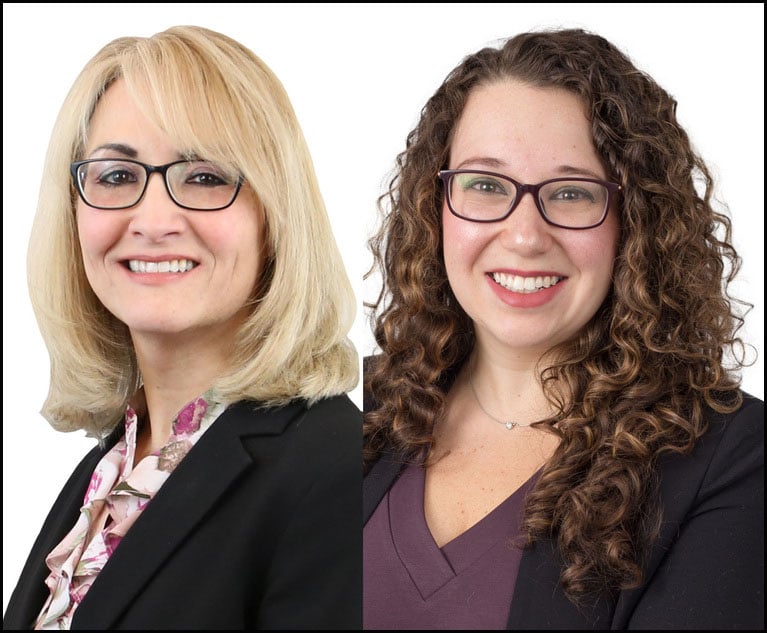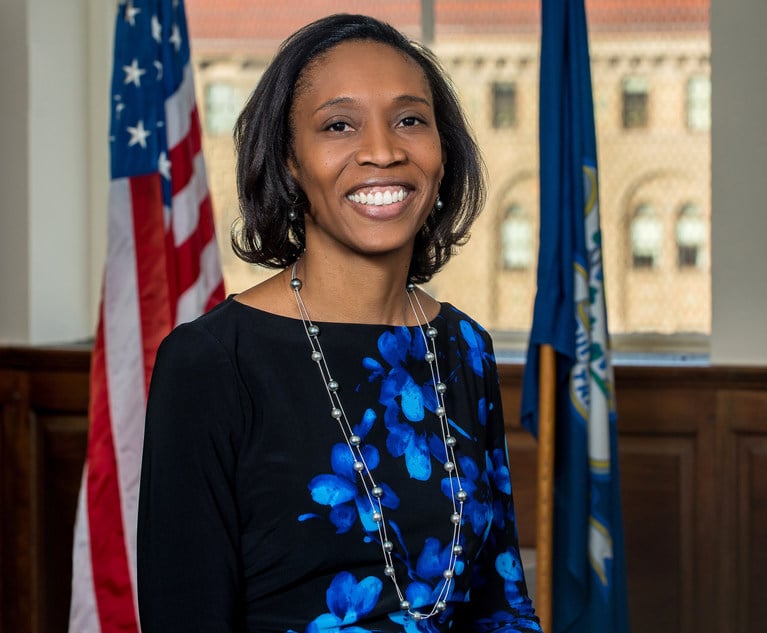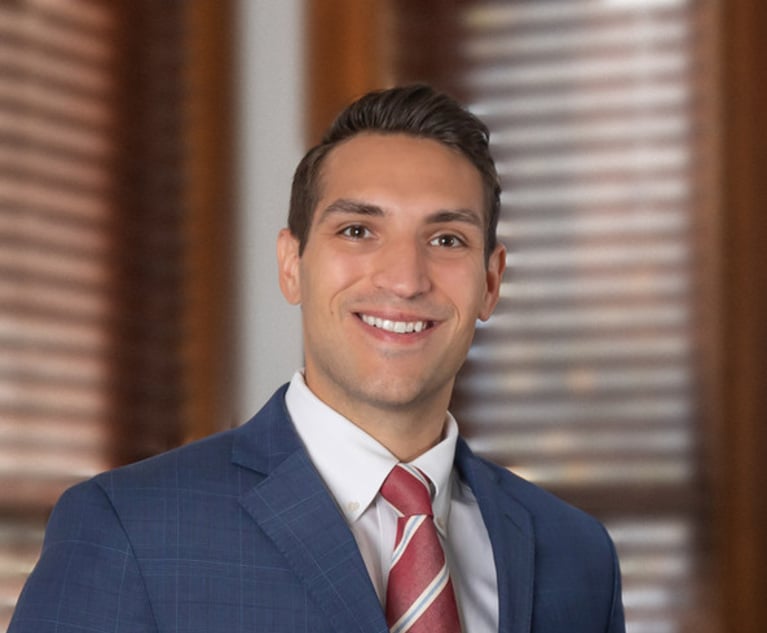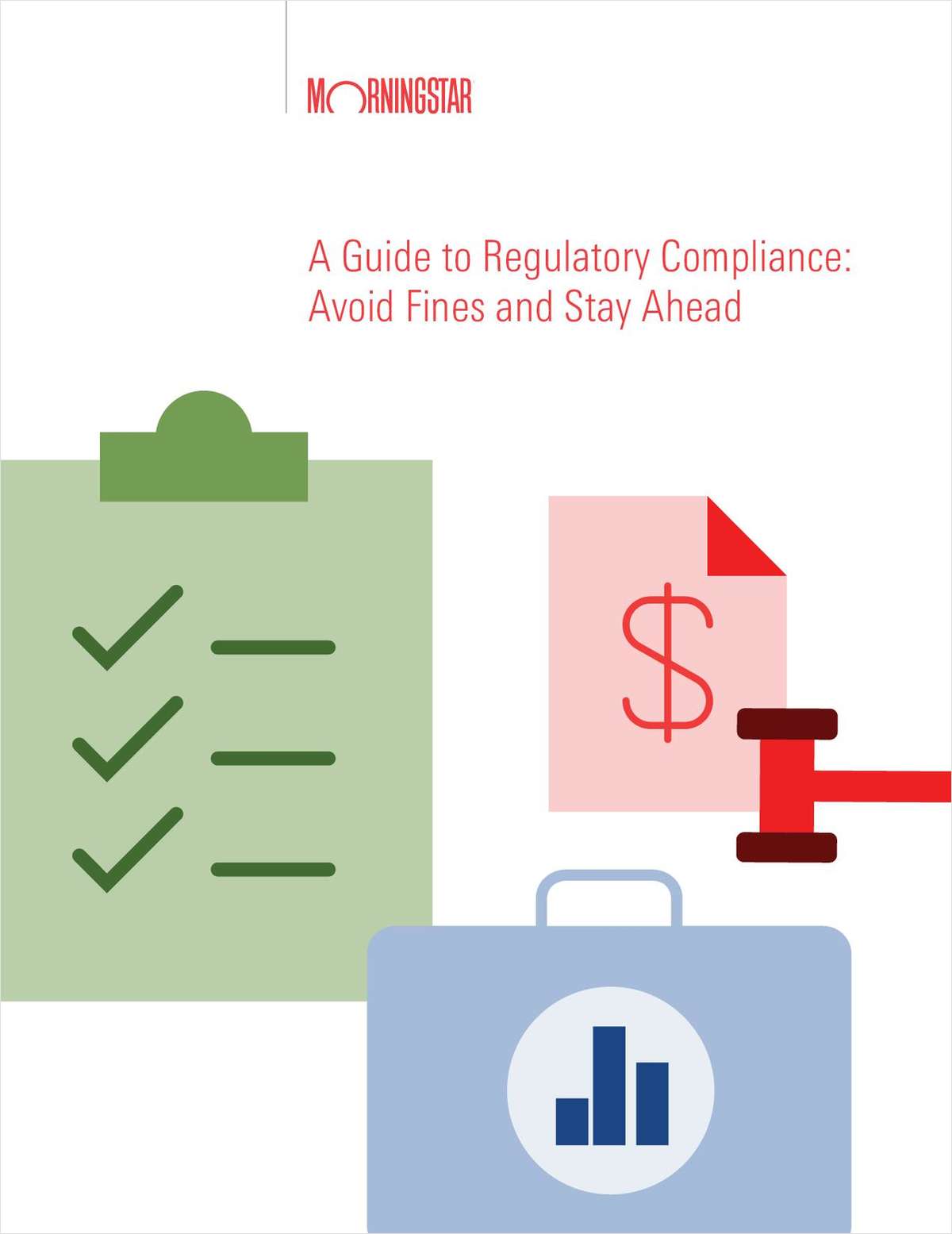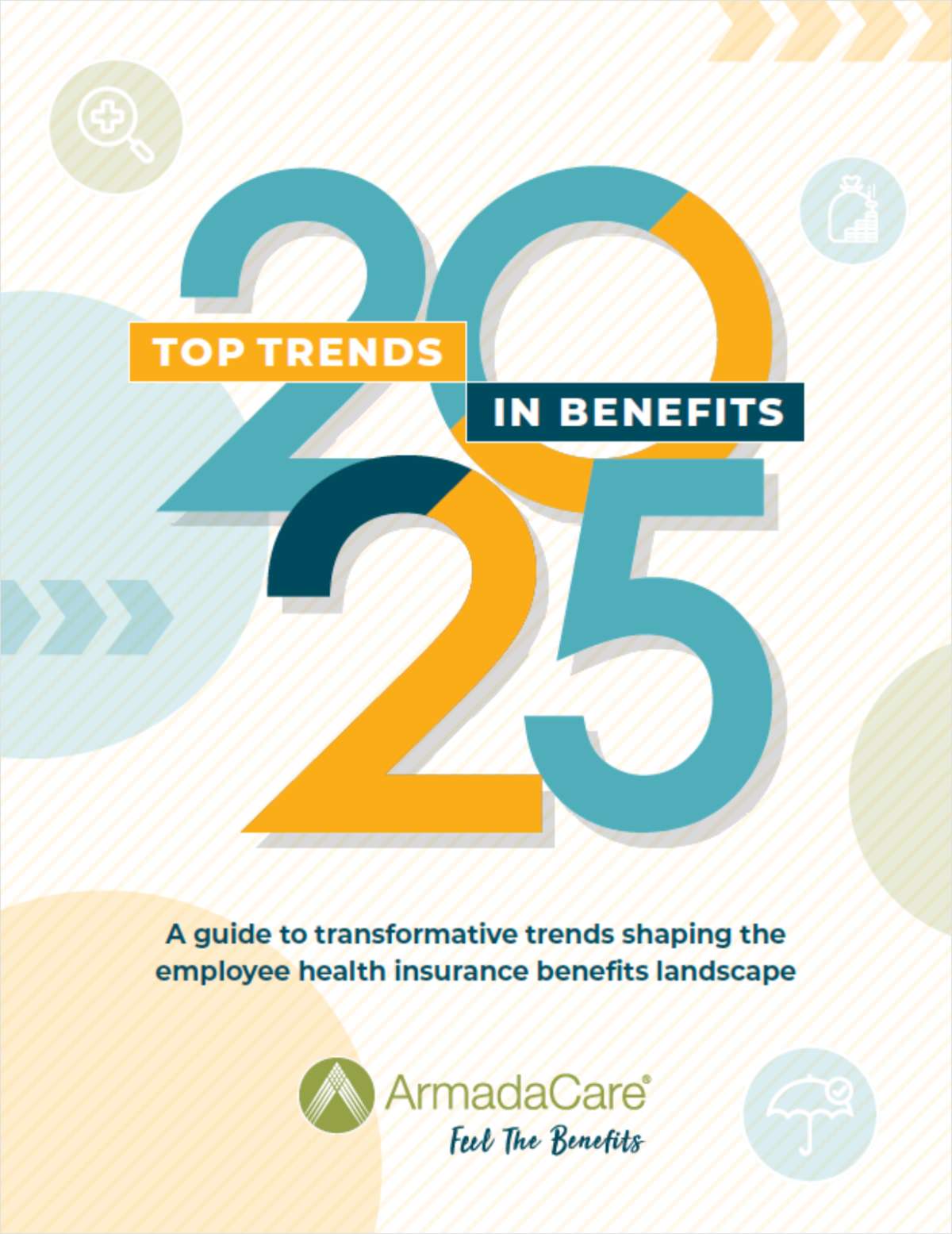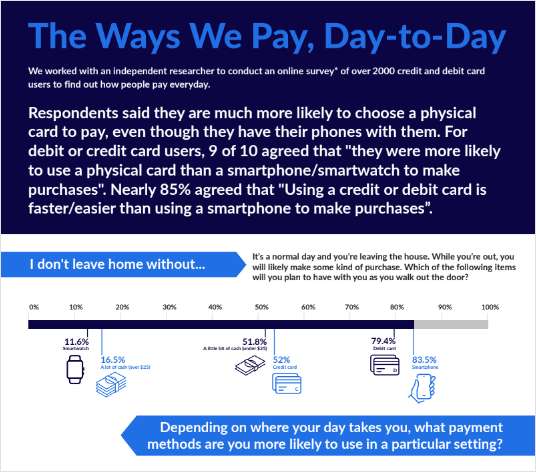Financials: Conn. Bar Association Outperforming ABA, Many Regionals
Recently elected CBA president Ndidi Moses said a central mission is to stay relevant. "It's about respecting customs and traditions but also being able to adjust to market trends," she said.
September 05, 2019 at 02:00 PM
6 minute read

As bar associations across the country face declining numbers and challenges recruiting new members, leaders of the Connecticut Bar Association say membership has remained steady, at more than 9,000 members, and the organization's fund balance is the largest it has been in more than a decade.
In contrast, the American Bar Association has been shrinking in recent years, including losing about 12% of its members in the past decade. The bar overhauled its membership structure in May, simplifying dues and reducing costs in hopes of stemming the tide. As of 2018, the ABA had 424,000 members, of which less than 200,000 were dues-paying members.
According to tax filings collected by ProPublica, from 2005 to 2018, the CBA has experienced lean times in the past, with three years that ended in budget deficits—in 2007, 2008 and 2012. In only one of the past 15 years—2007—the bar ended up with a negative fund balance.
Past CBA president Mark Dubois, the state's first chief disciplinary counsel and columnist for the Connecticut Law Tribune, recalled the bar had spent significant funds renovating its Law Center in 2007, just in time for a national recession.
"As I remember, the recession hit the membership hard," Dubois said. "We had done renovations to the building and we had a very big staff. When I came into leadership in 2012, we were still running lean. We cut staff and programs, focused on our core mission and strengths, worked to get a better rate on our borrowing, built up membership and turned it around."
Since then, the bar's revenues have steadily grown, building the organization's fund balance back to nearly $4 million.
 Ndidi Moses of the Connecticut Bar Association.
Ndidi Moses of the Connecticut Bar Association.
Recently elected CBA president and Assistant U.S. District Attorney Ndidi Moses said membership in recent years has hovered between 9,000 and 10,000, with natural fluctuations. "To the extent that we start to lose members, we try to figure out what we are doing well, and we do focus groups to find out how we can improve our services," she said. "I think we will continue to do that. We have great, loyal members who dedicate lots of their time to the bar, and it's all volunteer."
A chart of the Connecticut Bar Association's financial reports for the past 14 years shows the organization seeing a positive trend in net revenues from 2015 to 2018, with the most recent year netting more than $800,000.
A former treasurer for the bar, Moses said a central mission is to stay relevant. "It's about respecting customs and traditions but also being able to adjust to market trends," she said. "We're highlighting our members' talents and telling people it's great that we work hard but we play hard too. A lot of our members are great musicians, and we're highlighting that."
The Connecticut bar also recently announced its 19th Amendment Centennial Scavenger Hunt, which encourages participants to visit 11 historical sites across the state.
Moses' immediate predecessor, Jon Shapiro, said the CBA saw a decrease in membership during and after the recession, but that a focus on offering continuing legal education credits and important lectures has helped bring members back. He agreed a focus on social events has also helped, including member appreciation nights. This year the bar held paper shredding events in Bridgeport and New Britain, making them available to all attorneys. "These may not be huge ticket items, but I think it's recognized that we want to provide value to our members," Shapiro said.
 Financial reports, Connecticut Bar Association, 2005-2018.
Financial reports, Connecticut Bar Association, 2005-2018.
Connecticut attorney Fred Ury, an American Bar Association leader who lectures around the country on the legal industry, said part of the problem facing bar associations is they're just getting older. "We're going to be very challenged as we go down the road because there are a lot more lawyers retiring than are coming in," he said. In turn, free CLEs have become a necessity for attracting younger members. "My generation is used to paying for everything. My children are not used to paying for anything."
Dubois, who counts himself a member of about 10 different bar groups, agreed that bar associations across the country are dealing with age demographics. "The ABA is struggling with declining membership and seems to be where we were [in Connecticut] a decade ago. These older organizations aren't as attractive to the new generation of lawyers. There are more specialty, ethnic and affinity bars competing for members, and bar membership isn't understood to be as important as it was decades ago." Being a member of different bars "all costs money and takes time to be involved," Dubois added. "You see a lot of grey hair at these meetings."
But age is also the mark of longevity, in which the CBA takes pride. Founded in 1875, the Connecticut bar's formation preceded the creation of the ABA. The organization celebrated its 100th anniversary in 1975, boasting about 4,000 members. Since the 1970s, while Connecticut's general population has grown by less than 20%, from 3.1 million to nearly 3.6 million, CBA membership has more than doubled.
During the 2000s, the organization's legislative area was expanded to two full-time lobbyists and a full-time legislative assistant. The organization also created the Connecticut Bar Institute, purchasing the CBA Law Center at 30 Bank St., New Britain. The renovation in 2007 included a new third-floor conference area, lobby, lounge and offices.
In his annual report for 2018-19, Shapiro said the CBA was "in an even better place than when I began my tenure. While many volunteer organizations, including bar organizations, are struggling with membership, the CBA continues to thrive. Membership remains steady and our finances are strong."
Shapiro also noted the organization recently refinanced its mortgage on the New Britain headquarters with a 15-year loan. "This refinancing will help guarantee financial security for the CBA for years to come," he noted.
Karen DeMeola, another former president of the organization, focused much of her time promoting increased diversity, and that mantle was taken on by Shapiro and Moses. Moses said heading up the organization now requires "standing on the shoulders of giants" who have helped broaden the appeal of the bar.
"We have traditionally done a good job of engaging members," Moses said. "I think to the extent that any time we start to lose members we try to figure out what we are doing well and what we can do better. Thirty or 40 years ago people considered all bars mandatory, but times have changed. People don't see it as a mandatory thing, and firms are making decisions about where they want to spend their money. Bars constantly have to upgrade and expand the limits of what's possible. I think it's exciting because it keeps you on your toes, but it does make you work a little bit."
This content has been archived. It is available through our partners, LexisNexis® and Bloomberg Law.
To view this content, please continue to their sites.
Not a Lexis Subscriber?
Subscribe Now
Not a Bloomberg Law Subscriber?
Subscribe Now
NOT FOR REPRINT
© 2025 ALM Global, LLC, All Rights Reserved. Request academic re-use from www.copyright.com. All other uses, submit a request to [email protected]. For more information visit Asset & Logo Licensing.
You Might Like
View All
High-Low Settlement Agreement 'Does Not Alone Establish Bias:' State High Court Affirms $20M Med Mal Verdict
5 minute readTrending Stories
- 1Special Series Part 2: CT Constitution’s Text Does Not Authorize the Statutory Guardrails
- 2Initial Steps to Set Up a Fla. Appeal: Your Future Self (or Appellate Attorney) Will Thank You
- 3Bar Report - Jan. 6
- 4New York’s Property Tax Incentives and Abatements Make Development Feasible
- 5Legal Tech's Predictions for Artificial Intelligence in 2025
Who Got The Work
Michael G. Bongiorno, Andrew Scott Dulberg and Elizabeth E. Driscoll from Wilmer Cutler Pickering Hale and Dorr have stepped in to represent Symbotic Inc., an A.I.-enabled technology platform that focuses on increasing supply chain efficiency, and other defendants in a pending shareholder derivative lawsuit. The case, filed Oct. 2 in Massachusetts District Court by the Brown Law Firm on behalf of Stephen Austen, accuses certain officers and directors of misleading investors in regard to Symbotic's potential for margin growth by failing to disclose that the company was not equipped to timely deploy its systems or manage expenses through project delays. The case, assigned to U.S. District Judge Nathaniel M. Gorton, is 1:24-cv-12522, Austen v. Cohen et al.
Who Got The Work
Edmund Polubinski and Marie Killmond of Davis Polk & Wardwell have entered appearances for data platform software development company MongoDB and other defendants in a pending shareholder derivative lawsuit. The action, filed Oct. 7 in New York Southern District Court by the Brown Law Firm, accuses the company's directors and/or officers of falsely expressing confidence in the company’s restructuring of its sales incentive plan and downplaying the severity of decreases in its upfront commitments. The case is 1:24-cv-07594, Roy v. Ittycheria et al.
Who Got The Work
Amy O. Bruchs and Kurt F. Ellison of Michael Best & Friedrich have entered appearances for Epic Systems Corp. in a pending employment discrimination lawsuit. The suit was filed Sept. 7 in Wisconsin Western District Court by Levine Eisberner LLC and Siri & Glimstad on behalf of a project manager who claims that he was wrongfully terminated after applying for a religious exemption to the defendant's COVID-19 vaccine mandate. The case, assigned to U.S. Magistrate Judge Anita Marie Boor, is 3:24-cv-00630, Secker, Nathan v. Epic Systems Corporation.
Who Got The Work
David X. Sullivan, Thomas J. Finn and Gregory A. Hall from McCarter & English have entered appearances for Sunrun Installation Services in a pending civil rights lawsuit. The complaint was filed Sept. 4 in Connecticut District Court by attorney Robert M. Berke on behalf of former employee George Edward Steins, who was arrested and charged with employing an unregistered home improvement salesperson. The complaint alleges that had Sunrun informed the Connecticut Department of Consumer Protection that the plaintiff's employment had ended in 2017 and that he no longer held Sunrun's home improvement contractor license, he would not have been hit with charges, which were dismissed in May 2024. The case, assigned to U.S. District Judge Jeffrey A. Meyer, is 3:24-cv-01423, Steins v. Sunrun, Inc. et al.
Who Got The Work
Greenberg Traurig shareholder Joshua L. Raskin has entered an appearance for boohoo.com UK Ltd. in a pending patent infringement lawsuit. The suit, filed Sept. 3 in Texas Eastern District Court by Rozier Hardt McDonough on behalf of Alto Dynamics, asserts five patents related to an online shopping platform. The case, assigned to U.S. District Judge Rodney Gilstrap, is 2:24-cv-00719, Alto Dynamics, LLC v. boohoo.com UK Limited.
Featured Firms
Law Offices of Gary Martin Hays & Associates, P.C.
(470) 294-1674
Law Offices of Mark E. Salomone
(857) 444-6468
Smith & Hassler
(713) 739-1250





